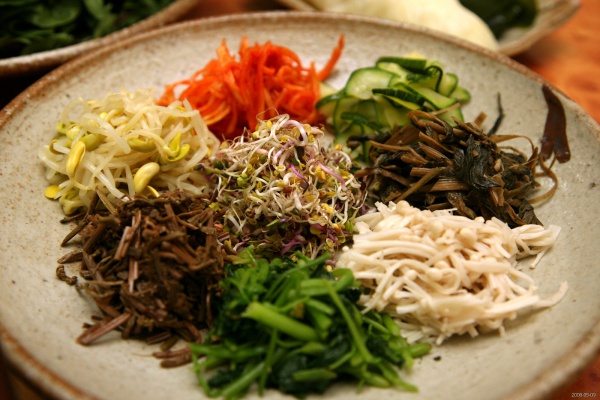Facts About Namul
In Korean cuisine, "namul" encompasses a variety of edible grasses, leaves, and seasoned herbal dishes crafted from these ingredients. Several types of namul exist, including wild greens known as san-namul and spring vegetables referred to as bom-namul. On Daeboreum, the first full moon of the year, it is traditional for Koreans to eat boreum-namul alongside five-grain rice to prepare for the summer heat.
Namul dishes can be made from a wide array of ingredients such as vegetables, herbs, greens, roots, leaves, stems, seeds, sprouts, petals, fruits, seaweeds, mushrooms, and even animal products like beef tendons. The preparation methods are varied and include blanching, boiling, frying, sautéing, fermenting, drying, or steaming. These seasoned dishes can be flavored with ingredients such as salt, vinegar, sesame oil, perilla oil, soy sauce, doenjang (soybean paste), gochujang (red chili paste), and other spices.
Namul dishes are often served as "banchan" or side dishes, that accompany main staples like rice. It is common to have multiple types of namul as part of a banchan spread in a single meal. The names of these dishes typically reflect their main ingredients and preparation methods. For example, a dish made with chamnamul might be called "chamnamul-muchim" while a dish made with raw radish is known as "musaengchae."

 North Korea
North Korea